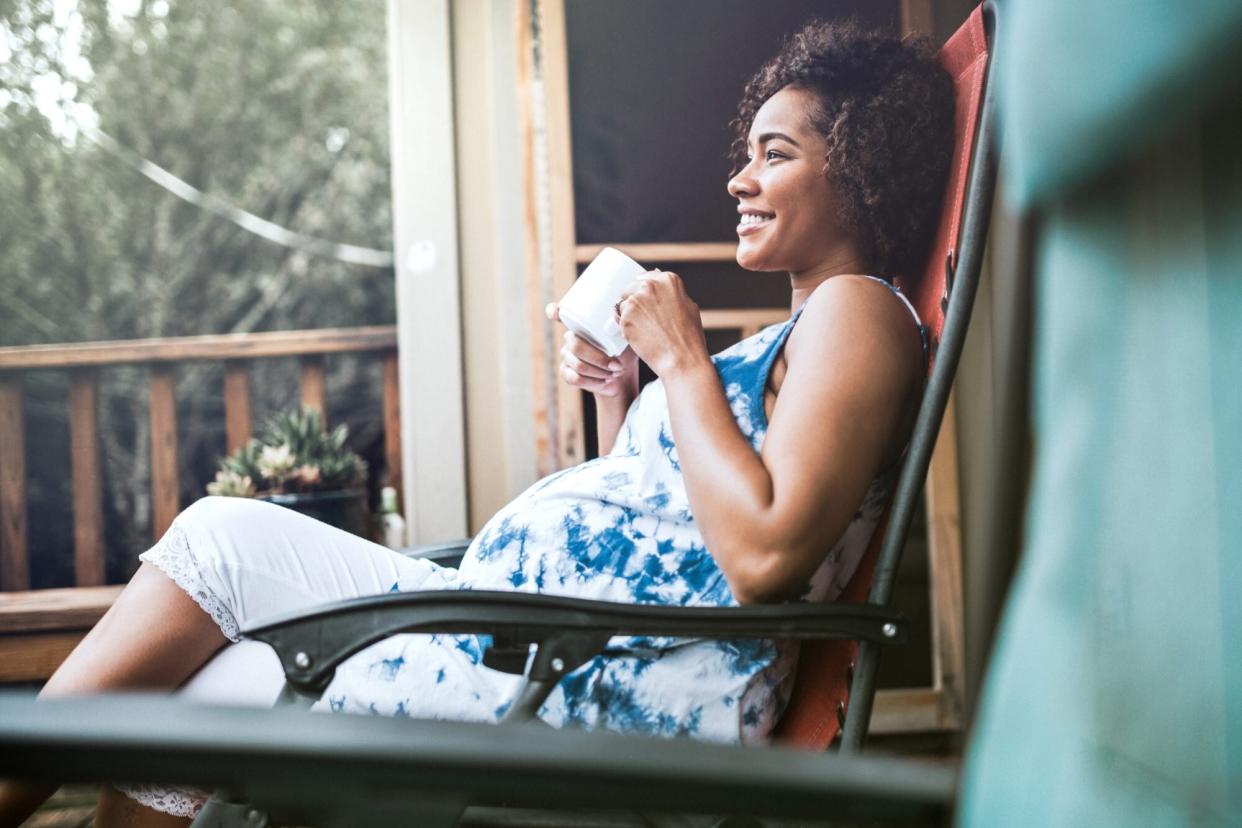How Your Breasts Change During Pregnancy and Beyond

RyanJLane/Getty Images
The changes to breasts throughout momhood—and beyond—are real and call for raising your support game. Breasts get their shape and lift not from chest muscles but from the skin and the tissues within: fat cells, mammary glands, and a springy net of what's called Cooper's ligaments.
Pregnancy—plus breastfeeding and, years later, menopause—has some major implications on those tissues. Here's what you should know about breast changes during pregnancy and after, plus how to keep them healthy for the long run.
Breast Changes During Pregnancy
Expect your breast size to increase 25 percent from the end of your first trimester to the end of your third, according to research in the European Journal of Cancer Prevention, in which expectant moms had 3D scans of their breast volume starting at 12 weeks. "The main impact on breast size is the effect that the pregnancy hormones—including estrogen, progesterone, prolactin, and human placental lactogen—have on glandular tissue [as the glands mature and ultimately produce milk], more than the effect of weight gain," says Amanda Underwood, M.D., an assistant professor of clinical obstetrics and gynecology at the Indiana University School of Medicine.
In fact, the increase of dense gland tissue actually causes fat cells to shrink. "This makes for breasts that are both larger and heavier, with automatic increase in speed and distance of breast motion if your bra is not built to restrict it," says LaJean Lawson, Ph.D., a biomechanist and a sports bra guru. Considering that the American College of Obstetricians and Gynecologists (ACOG) released updated recs that encourage women who regularly do vigorous exercise to keep it up during pregnancy, you likely need a sports bra upgrade: Going from a B cup to a D cup can increase vertical bounce per running step by 40 to 60 percent if breasts are unsupported, putting more stress on those Cooper's ligaments. Try the Nike Bold bra (Buy It, $75, nike.com) which has you covered as breasts naturally expand.
Breast Changes After Birth
For moms who nurse, daily milk production averages 600 milliliters, or 20 fluid ounces, says Dr. Underwood. If you divide that over feedings, you get a sense of the size fluctuation before and after nursing. Not nursing? Those glands will no longer produce milk within a month—same as if you were to wean off nursing—but they will remain in their slightly larger matured state thereafter.
To answer the million-dollar question about who's more likely to experience stretch marks or sag: "The reality is that pregnancy alone is going to have this impact on your breast [composition and appearance], regardless of whether you choose to breastfeed," says Dr. Underwood. "All the studies have shown that the number of pregnancies tends to be more influential on breast appearance than breastfeeding." (Breastfeeding is, however, associated with a decreased risk in developing breast cancer.) (Related: Shawn Johnson Got Real About 'Mom Guilt' After Deciding Not to Breastfeed)
According to ACOG, regular aerobic exercise in nursing moms doesn't affect milk production or its composition. So nurse first, and you're good to go. To mitigate the moving target of your breast volume during this time, use "a shallower, minimizing cup, which will help hold things close," says Lawson. Go for a minimizing effect with Champion Spot Comfort Sports Bra (Buy It, $28, amazon.com)
Breast Changes During Menopause
For all women, the decrease in estrogen that comes with going through menopause causes those mammary glands to shrink and eventually experience "cellular death," says Dr. Underwood. Breasts therefore lose volume and become primarily fatty as opposed to dense with glandular tissue. "And then the skin, independent of all these factors, loses elasticity for a variety of reasons," she says. (Also, having a history of significant weight fluctuation outside of pregnancy can similarly affect elasticity of the breast skin and ligaments.) Less volume might call for a smaller cup size, but you'll still want to maximize your bounce control: A less stretchy encapsulation-style sports bra that separates the breasts and has wider straps–like the Lululemon's encapsulation-style Run Times bra (Buy It, $68, lululemon.com)–is best for C cups and up, says Lawson.

